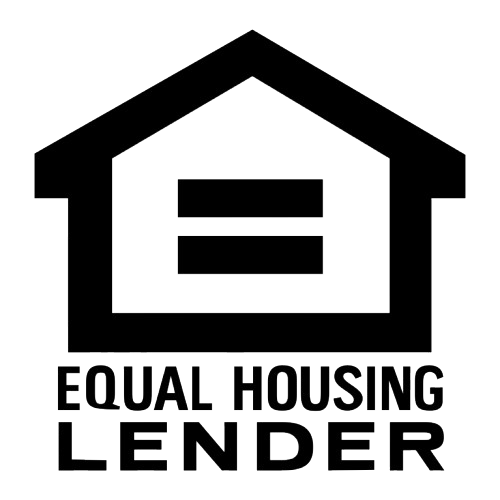Conventional High Balance
What is a Conventional High Balance Loan?
A Conventional High Balance Loan is a type of mortgage that exceeds the conforming loan limits set by the Federal Housing Finance Agency (FHFA) for conventional loans, but is still eligible for purchase or backing by Fannie Mae and Freddie Mac. These loans are designed for borrowers in higher-cost housing markets where the typical loan limits do not cover the full cost of purchasing or refinancing a home.
In essence, it’s a loan that allows borrowers to secure financing above the standard conforming loan limits but still benefits from competitive interest rates and favorable terms, much like a traditional conforming loan.

Who Can Benefit from a Conventional High Balance Loan?
The Conventional High Balance loan can be beneficial for:
- Homebuyers in Expensive Markets: Homebuyers in high-cost areas (e.g., major metropolitan cities) where home prices exceed the standard conforming loan limits.
- Borrowers with Large Loan Needs: Those who need to borrow more than the standard conforming loan limits but want to avoid taking out a jumbo loan, which typically comes with higher interest rates.
- Borrowers with Good Credit: While these loans offer flexibility, they are still primarily for borrowers with strong credit histories and stable financial profiles.
- Homeowners Looking to Refinance: Homeowners in high-cost areas who are looking to refinance their existing mortgages at competitive rates without crossing into the higher-risk jumbo loan territory.
Benefits of a Conventional High Balance Loan
- Competitive Interest Rates: Conventional High Balance loans offer interest rates similar to those of conforming loans, which tend to be lower than those of jumbo loans.
- No Private Mortgage Insurance (PMI) with 20% Equity: If you have at least 20% equity in your home, you may be able to avoid paying PMI, which helps reduce your overall monthly payment.
- Higher Loan Limits: These loans allow for higher loan amounts compared to standard conforming loans, making them ideal for borrowers purchasing homes in expensive areas.
- Favorable Terms: They offer terms similar to traditional loans, such as 30-year fixed-rate options, making them a more affordable choice for borrowers in high-cost housing markets.
- Fannie Mae and Freddie Mac Eligibility: Because these loans are backed by Fannie Mae or Freddie Mac, they generally come with fewer risks for lenders and more stable terms for borrowers.
How Does a Conventional High Balance Loan Work?
A Conventional High Balance Loan works similarly to a standard conventional loan, except it allows you to borrow more than the typical loan limits for your county or region. The loan amount must be within the limits set by Fannie Mae or Freddie Mac, which vary depending on the area.
These loans are ideal for borrowers who are purchasing homes in high-cost areas where standard conforming loan limits may not be sufficient. The primary advantage is that borrowers are still able to access competitive interest rates and more favorable terms compared to jumbo loans.
Unlike jumbo loans, which are not backed by Fannie Mae or Freddie Mac and typically come with higher interest rates, Conventional High Balance Loans offer the benefit of being eligible for purchase by government-sponsored enterprises (GSEs), keeping borrowing costs lower.
Qualifying for a Conventional High Balance Loan
To qualify for a Conventional High Balance Loan, borrowers generally need to meet the following criteria:
- Credit Score: A good credit score is usually required, typically 680 or higher, though this can vary by lender.
- Income Verification: Proof of stable income through pay stubs, tax returns, and other documentation.
- Down Payment: The minimum down payment typically ranges from 5% to 20%, depending on the loan amount, property type, and borrower qualifications.
- Debt-to-Income Ratio (DTI): Your DTI ratio should be below 43%-45%, although higher ratios may be acceptable in certain cases, particularly for those with higher credit scores and significant assets.
- Loan Limits: Loan limits for Conventional High Balance Loans vary by county, and the amount you can borrow depends on the area’s housing costs. For example, in high-cost areas, the limit might be as much as $1 million or more, while in other regions, the limit may be lower.
Required Documents
- Proof of Income: Pay stubs, tax returns, or other documentation to verify your income.
- Credit Report: A credit report to assess your creditworthiness.
- Property Documentation: A home appraisal and other documents to confirm the value of the property being purchased or refinanced.
- Employment Verification: Documentation to verify your current employment status.
- Down Payment Verification: Proof of the funds for your down payment, such as bank statements or gift letters.
Is a Conventional High Balance Loan Right for You?
If you are purchasing or refinancing a home in a high-cost housing market and need to borrow more than the typical conforming loan limits, a Conventional High Balance Loan could be an excellent option. These loans offer the benefit of competitive interest rates, reduced fees compared to jumbo loans, and favorable terms that help make homeownership more accessible.
Contact us today to see if a Conventional High Balance loan is the right fit for your home financing needs and to learn more about the loan limits in your area.


We are an independent mortgage brokerage licensed through DRE, proudly serving clients since 2007.

Company
Get In touch
- 510-786-8739
- info@simtg.com
- 44840 South Grimmer Blvd Fremont, CA 94538
Copyright @ 2022. All Rights reserved.